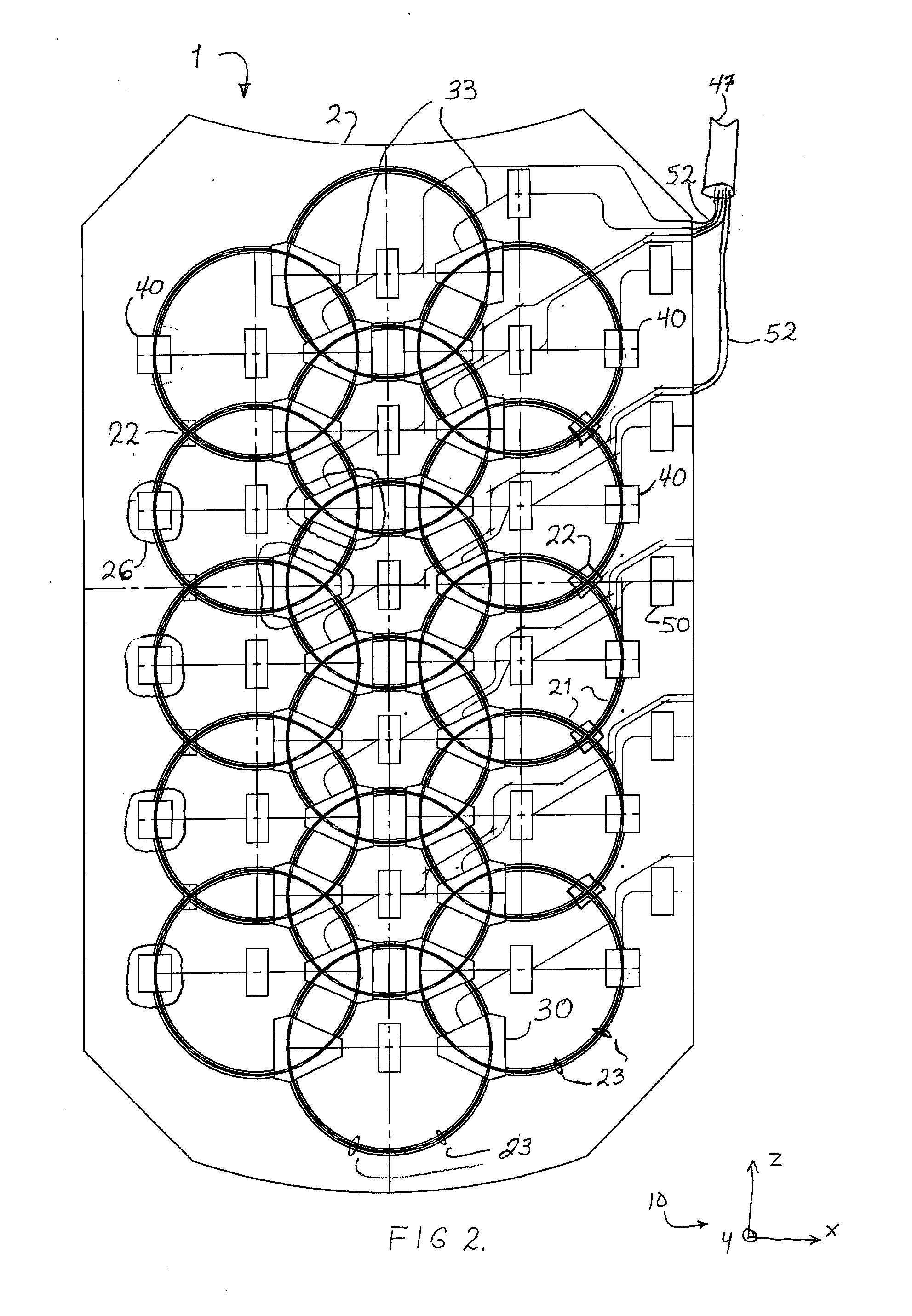Garment MRI Antenna Array
- Summary
- Abstract
- Description
- Claims
- Application Information
AI Technical Summary
Benefits of technology
Problems solved by technology
Method used
Image
Examples
Embodiment Construction
[0055]Referring to FIG. 1, a flexible blanket MRI antenna array in accordance with one embodiment of the present invention is shown generally as 1. The blanket array 1 includes sixteen flexible antenna elements (two of which are identified in FIG. 2 as 21) attached to a flexible substrate 2 that is similar to a thin blanket. The elements 21 and substrate 2 are encapsulated by a flexible housing 1B (FIGS. 5A-B), which is preferably constructed from foam and / or fabric as discussed in more detail below, in such a manner that the entire blanket array 1 is sufficiently flexible to drape over or be wrapped about a human body 3 and distort in three dimensions to closely conform to contours of the body 3. This positions the elements 21 closer to the human tissue where they maintain more constant electromagnetic loading and yield more consistent performance results. Consistency is also improved by ensuring a minimum distance between the actual elements 21 and the target anatomy since signal ...
PUM
 Login to View More
Login to View More Abstract
Description
Claims
Application Information
 Login to View More
Login to View More - R&D
- Intellectual Property
- Life Sciences
- Materials
- Tech Scout
- Unparalleled Data Quality
- Higher Quality Content
- 60% Fewer Hallucinations
Browse by: Latest US Patents, China's latest patents, Technical Efficacy Thesaurus, Application Domain, Technology Topic, Popular Technical Reports.
© 2025 PatSnap. All rights reserved.Legal|Privacy policy|Modern Slavery Act Transparency Statement|Sitemap|About US| Contact US: help@patsnap.com



